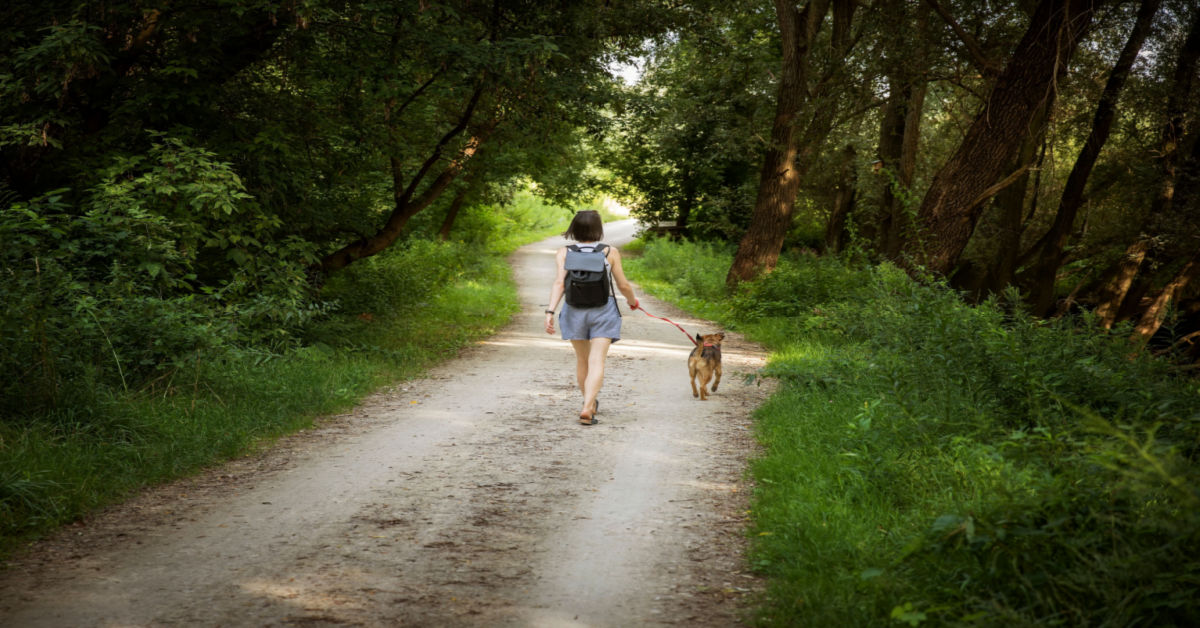< Go Back
10 Essential Tips for Staying Safe While Walking Your Dog
Written by Adrian Worthington, published 02-06-23
We all love walking our dogs, its a great way to bond with your furry friend and get some exercise, but it’s important to take steps to ensure your personal safety, especially in the short winter days. Whether you’re exploring new areas or hitting your local park, these safety tips will help you stay safe and secure while walking your dog.
Be aware of your surroundings
One of the most important things you can do to stay safe is to always be aware of what’s happening around you. Avoid distractions like texting or listening to music and keep your dog close by your side. If you’re walking in an area that’s not well-lit or populated, be extra vigilant and keep your phone charged and within easy reach.
Carry a personal alarm
Personal alarms can prove to be of immense help in emergency situations, particularly during dog walks. We offer a range of personal alarms that are specially designed to ensure your safety. Our electronic personal alarms can be attached to your dog’s lead for quick and easy access, allowing you to activate a loud alarm and alert those nearby in case of danger. Our canister personal alarms can be pointed towards potential attackers, creating confusion and fear, thereby increasing your chances of fending off an attack. It’s crucial to keep your personal alarm within easy reach and to familiarise yourself with its usage before you find yourself in a potentially dangerous situation
Avoid walking alone
Walking with a friend or a group is always safer than walking alone. If you have to walk alone, make sure someone knows your route and expected arrival time. Avoid walking in isolated areas, especially at night, and stick to well-lit, populated areas.
Trust your instincts!!!
If you ever feel uneasy or threatened, trust your instincts and remove yourself from the situation as quickly as possible. Don’t hesitate to call for help if you need it.
Keep your phone charged
Make sure your phone is charged and with you at all times. Keep important numbers saved, such as the police and a trusted friend or family member, in case of an emergency.
Wear bright or reflective clothing
Wearing bright or reflective clothing can make you more visible to drivers and others, especially if you’re walking in the early morning or evening. This is especially important if you’re walking in an area with limited lighting.
Avoid walking in risky areas
Avoid walking in areas that are known to be dangerous, such as dark alleys or secluded parks. If you have to take a detour, make sure you’re familiar with the area and have a plan for what to do in an emergency.
Be Cautious around water
Open water, such as rivers, lakes, and ponds, can pose a serious threat to both you and your dog. It’s easy to be misled by the appearance of the water, but its depth and currents can be unpredictable and strong. Wintertime can pose an even greater risk as the water surface may be frozen. Keep in mind that, even if your dog is a strong swimmer, they may not be able to get themselves out of a dangerous situation. For this reason, it’s best to avoid letting them enter open water if you’re unsure of its safety. However, if a situation does arise, remember that dogs are often stronger swimmers than humans, and will more than likely be better at getting out of the situation than you will, so always proceed with caution when near bodies of water.
Keep your dog under control
Make sure your dog is always under control, either by keeping them on a lead or using a voice command. This not only ensures their safety, but also the safety of others around you.
Be prepared
It’s always wise to be prepared for any unexpected circumstances. Before embarking on a dog walk, make sure you have a checklist that includes not only water, treats, and poop bags for your furry friend, but also a personal alarm.
By taking these simple safety measures, you can ensure a pleasant and safe walk for both you and your dog. Don’t forget to carry a personal alarm, and be mindful of your surroundings at all times. Avoid walking alone, follow your instincts, keep your phone charged, wear clothing that is bright or reflective, steer clear of potentially dangerous areas. Wishing you happy and safe walks with your beloved pet!





Leave a Reply
You must be logged in to post a comment.